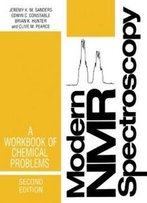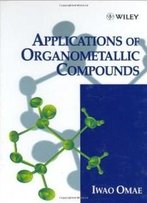
Silanes And Other Coupling Agents, Volume 5
by Kash L. Mittal /
2009 / English / PDF
8.2 MB Download
The topic of silanes and other coupling agents/adhesion promoters
is of tremendous contemporary interest because of their application
in many and varied technologically important areas ranging from
coatings to reinforced composites to dentistry to biomedical (e.g.,
for bonding nucleotides to the so-called ‘gene chips’). In
addition to their traditional use for bonding different materials,
silanes have been shown to be highly effective in corrosion
protection of metallic materials. This book is divided into three
parts as follows: Part 1: Silane Coupling Agents/Adhesion
Promoters; Part 2: Silanes for Corrosion Inhibition/Protection;
Parts 3: General papers. The topics covered include: various ways
to deposit silanes and factors affecting silane deposition and
silane deposit characteristics; structure of silane deposits;
silane deposition on glass and other surfaces; hydrophobic silane
films; water absorption and transport in silane films; application
of silanes in fiber-reinforced composites for dental use in
cathodic delamination of elastomer-metal adhesive joints, and to
impart anti-mold and anti fungal characteristics to wood; use of
silanes in providing corrosion protection to metallic materials and
in enhancing corrosion performance of coatings; plasma polymer
coatings in corrosion protection of metallic materials;
chromata-free silane-containing primer technology; silane coupling
agents for surface-initiated living polymerization; nanosols to
improve functional properties of fabrics; photocatalytic titania
for textile application; solid-state NMR studies of surface
treatments; surface free energy of silicon-based plasma polymer
films. In essence this book reflects the latest R&D activity in
this arena and should be of interest and value to anyone with a
desire or need to learn about this fascinating and technologically
highly significant class of materials.
The topic of silanes and other coupling agents/adhesion promoters
is of tremendous contemporary interest because of their application
in many and varied technologically important areas ranging from
coatings to reinforced composites to dentistry to biomedical (e.g.,
for bonding nucleotides to the so-called ‘gene chips’). In
addition to their traditional use for bonding different materials,
silanes have been shown to be highly effective in corrosion
protection of metallic materials. This book is divided into three
parts as follows: Part 1: Silane Coupling Agents/Adhesion
Promoters; Part 2: Silanes for Corrosion Inhibition/Protection;
Parts 3: General papers. The topics covered include: various ways
to deposit silanes and factors affecting silane deposition and
silane deposit characteristics; structure of silane deposits;
silane deposition on glass and other surfaces; hydrophobic silane
films; water absorption and transport in silane films; application
of silanes in fiber-reinforced composites for dental use in
cathodic delamination of elastomer-metal adhesive joints, and to
impart anti-mold and anti fungal characteristics to wood; use of
silanes in providing corrosion protection to metallic materials and
in enhancing corrosion performance of coatings; plasma polymer
coatings in corrosion protection of metallic materials;
chromata-free silane-containing primer technology; silane coupling
agents for surface-initiated living polymerization; nanosols to
improve functional properties of fabrics; photocatalytic titania
for textile application; solid-state NMR studies of surface
treatments; surface free energy of silicon-based plasma polymer
films. In essence this book reflects the latest R&D activity in
this arena and should be of interest and value to anyone with a
desire or need to learn about this fascinating and technologically
highly significant class of materials.










